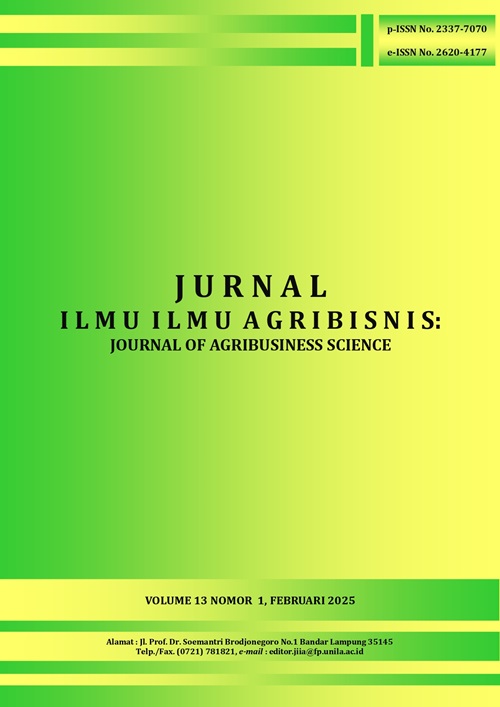PERBEDAAN PENILAIAN PENGUNJUNG KELUARGA DAN NON-KELUARGA TERHADAP ATRIBUT WISATA DAERAH PERBUKITAN DI BANDAR LAMPUNG
DOI:
https://doi.org/10.23960/jiia.v13i1.9950 Abstract View: 153
Abstract View: 153
Abstract
ABSTRACT
This research aims to analyse the differences between family visitors and non-family visitors in assessing the importance of the attributes of hilly area tourism and to rank the importance of these attributes. Additionally, it seeks to analyse which performance-related qualities should be preserved and which require improvement. 35 family visitors and 35 non-family visitors were interviewed for 16 qualities as part of this study's survey methodology. Probability sampling was used to choose the sample. Importance Performance Analysis (IPA) and the Mann-Whitney test were used for data analysis. When evaluating the value of traits, family visitors and non-family visitors differ in six ways, according to the results of the Mann-Whitney test. Meanwhile, the five attributes with the highest importance rankings in the assessment based on family visitors were comfort while traveling, scenery, air quality, safety while traveling, and food courts. In contrast, the assessment of non-family visitors highlights the five attributes with the highest importance rankings as air quality, scenery, comfort while traveling, tranquillity while traveling, and price. Furthermore, the combined results of the IPA analysis on family visitors and non-family visitors concluded that there were five attributes that need to be improved and nine attributes that need to maintain their performance.
Key words: Attributes, Family and Non-family, Importance and Performance, and Importance Performance Analysis (IPA).
Downloads
Downloads
Published
How to Cite
Issue
Section
License
Authors who publish with this journal agree to the following terms:
Authors retain copyright and grant the journal right of first publication with the work simultaneously licensed under a Creative Commons Attribution License that allows others to share the work with an acknowledgement of the work's authorship and initial publication in this journal.
Authors are able to enter into separate, additional contractual arrangements for the non-exclusive distribution of the journal's published version of the work (e.g., post it to an institutional repository or publish it in a book), with an acknowledgement of its initial publication in this journal.
Authors are permitted and encouraged to post their work online (e.g., in institutional repositories or on their website) prior to and during the submission process, as it can lead to productive exchanges, as well as earlier and greater citation of published work (See The Effect of Open Access).














